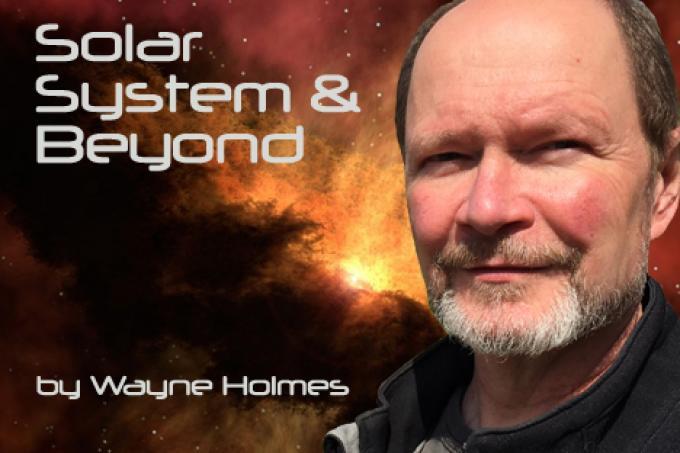A super Moon and the year's most active meteor shower
Local Astronomer Wayne Holmes has had an interest in astronomy since he got his first telescope and began reading about the objects in the sky at a young age. As the coordinator of the Starry Nights program at Taghum Hall as well as multi session astronomy classes as part of the Learning in Retirement program and astronomy programs for schools, Holmes has always had a desire to sky gaze. Thankfully, Holmes has agreed to share his knowledge with a column, Solar System and Beyond that will appear occasionally in The Nelson Daily.
December 3rd
Tonight's full Moon is known as the Long Night or Cold Night Moon. When it rises in the east at sunset we will be looking at the largest full Moon of the year, a so called "super Moon".
The Moon's orbit around Earth is slightly elliptical and it's visual diameter and brightness can vary. When it is full at it's point of closest approach, (at perigee) it can appear larger than when it is at it's most distant point in it's orbit,(at apogee). To the casual viewer the difference in size is not that easy to detect. If you take a photo of the full Moon at perigee and compare it to a photo of the Moon at apogee you would see that there is a noticable difference in diameter.
The next perigee, or "super Moon" will be the night of January 1st to the morning of January 2nd and that "Super Moon" will be 927 km closer than the December Moon.
Due to the strong, direct sunlight reflected off of the Moon, a full Moon is not considered to be a good time for viewing the Moon with binoculars or a telescope. The direct light visually flattens the craters and mountains that show depth much better with the angled sunlight that the various phases of the Moon gives.
A full Moon is the best time however for observing one of the Moon's most prominent craters – Tycho. Look toward the bottom of the Moon and you will quickly spot light coloured Tycho and the rays spreading out from this large crater. Tycho is young compared to most other craters on the Moon, being only 108 million years old. The ejected material from the meteorite impact that formed Tycho crater and it's ray pattern has not yet darkend from exposure to sunlight.
Carefull observation of the crater with binoculars or a telescope will reveal a dark ring around the outside of the crater. This dark material is glassy impact melted rock which originated in the explosion that created the crater.
On the night of December 13th to the morning of December 14th, the Geminid meteor shower peaks.
Most people are aware of the wonderful August Perseid meteor shower, but if you would like to view a meteor shower that is as good or better than the Perseids, bundle up and head outside the night of December 14th. At it's peak, shortly after midnight we could get about 120 meteors per hour, although the number that you will actually see will likely be fewer depending on how open and how dark your viewing area is.
Unlike most meteor showers that are the result of Earth passing through a debris stream left behind by a passing comet, the Geminids have debris from a large asteroid as thier source. This 4 km diameter asteroid, known as 3200 Phaethon has been mentioned in the news lately. On December 16th it will make a 10 million km pass by Earth, giving astronomers a really good chance to study it. The fact that it leaves a debris stream could mean that it is breaking up or it may not be an asteroid at all. There is the possibility that it is a large, dirty comet
If you choose to view the Geminid meteor shower in the hours just before dawn and you have a fairly low eastern horizon, you may spot Jupiter shining brightly with a thin crescent Moon 3 degrees above it.
Wayne Holmes



























